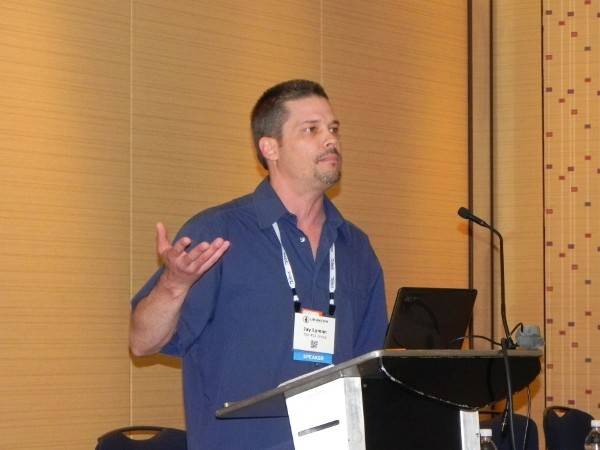Jay Lyman, senior analyst for the 451 Group, spoke at LinuxCon North America 2011 on the changing Linux landscape. Sessions are short at LinuxCon – about 50 minutes in total, give or take. So there’s not a lot of time to get deep into the nitty gritty and perform a detailed analysis or explanation of a market that’s now nearly 20 years old. Lyman went through a brief discussion of the major players in the market, and touched on the SWOT (strengths, weaknesses, opportunities and threats) for each.

Red Hat and SUSE, according to Lyman, are strong in the x86 commodity market and have their own areas of strength, but a common weakness – being slow to cloud computing. Lyman said Canonical has been faster to address the cloud, and cited its bundling of Eucalyptus and OpenStack, and asserted that Ubuntu is popular with developers for cloud deployments.
A common perception is that Red Hat and SUSE are threatened by “unpaid” or community Linux distributions. There’s something to that, said Lyman, but not a great deal. In fact, Red Hat in particular benefits a great deal from community Linuxes like CentOS that allow customers to prototype applications and do development, then deploy on Red Hat Enterprise Linux for production. But he said he has talked to customers who have wrapped up a subscription and asked “did we actually use that?” In some cases, not so much. Lyman pegged the paid subscription market at about 12.6% of the market.
What’s the effect of Oracle Linux on RHEL? Lyman said it’s not great. In shops running Oracle software, he said it’s best to opt for Oracle Linux. In shops without Oracle, he’s seen very little adoption of Oracle Linux. In mixed shops, where there are Oracle and other ISV-supported software, you see a mix. The weakness of Oracle Linux, according to one audience member, is that “if you need ISV support for anything else, you have to run something other than Oracle.”

In the understatement of the year, perhaps the decade, Lyman also noted that he’s “not sure Oracle understands community.” But Lyman said that customers really haven’t reacted to Oracle’s community missteps with OpenOffice.org or OpenSolaris, or its wholesale copying and rebranding of RHEL. Instead, he said Oracle and community distributions have “imposed discipline on the market” and forced Red Hat to improve support and pricing.
Lyman also spent some time talking about the DevOPS trend and its ties with Linux. Unlike Linux, he said, DevOPS is not sneaking into business – it’s being adopted and driven by leadership and management. “It will be policy driven, paid, and it will happen pretty fast.”
Overall, the talk was good but didn’t go quite far enough or deep enough. Lymon’s talk was probably better suited for a more general audience, rather than an industry gathering devoted to Linux. While an accurate look at the market, it could have gone into much more depth and skipped the preliminaries. The Linux landscape is changing, and it would have been nice to have more detail on the direction of the major players and where (in particular) SUSE Linux is going in the face of the Attachmate acquisition and relative quiet out of Nuremberg. But Lymon’s themes echoed those of other presentations at LinuxCon: As Red Hat’s Jim Whitehurst said during his keynote, Linux is not about the technology, it’s about what it’s enabling. While the Linux landscape is changing, it’s more about what Linux is changing in the landscape. Whether it’s cloud computing, the mobile market, or traditional server workloads, Linux is quite literally everywhere except the desktop on its 20th birthday.

















